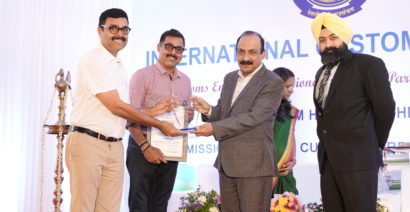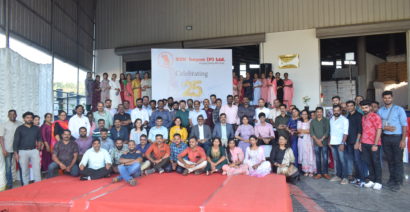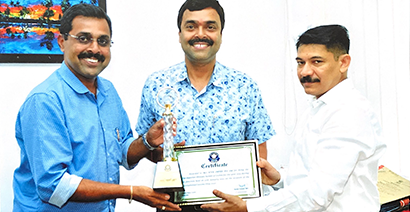- Home
- Techniques of Plastic Manufacturing
Latest post | Media
Techniques of Plastic Manufacturing
On November 25, 2020 | By KVN Impex Management
Introduction
Plastic is a great invention for mankind. This has created a huge leap forward in the manufacturing sector in industrialization. The word plastic means ‘soft’ or ‘easily formed’. This encompasses materials made of different elements such as carbon, hydrogen, oxygen, nitrogen, chlorine, and sulfur.
Plastics are the most important components for the manufacture of end-use parts and products, from household products to medical equipment. Plastics are a diverse group of materials with thousands of polymer alternatives, each with its unique mechanical properties.
Plastics usually have a high molecular weight, which means that each molecule may have thousands of atoms bound together. Real materials, such as wood, horn, and rosin, are often made up of molecules of high molecular weight. Manufactured or synthetic plastics are also manufactured to emulate the properties of natural materials.
Plastics, also known as polymers, are manufactured by the extraction of raw materials or by the synthesis of primary chemicals usually produced by oil, natural gas, or coal.
Although all plastics are polymers, not all polymers are plastics. Polymers benefit human society in three forms: plastics, fibers (yarn, fiber), and elastomers (stretchable like rubber).
Plastics come from a wide variety of chemicals, derivatives, and additives, and have a wide range of functional and aesthetic properties. To simplify the process of selecting a material that is best suited to a specific part or product, let’s look first at the two main plastic forms: thermoplastics and thermosetting plastics.
What are thermoplastics?
Thermoplastics are the most commonly used plastic-type. These can be melted any number of times and then transformed into another material without significant destruction. Since chemical bonding does not take place, this process can be completely undone and recycled.
There are several thermoplastic resins that provide a range of performance advantages, but most formulations also offer high strength, shrink resistance, and fast bending. Based on this resin, thermoplastics can be used for shopping bags, mechanical parts that require high pressure, or important parts for vehicles.
So, what are thermosetting plastics?
Thermosetting plastic refers to a material that becomes irreversibly solid when exposed to heat. Such a substance can also be referred to as a thermoset or a polymer. In addition, such materials have polymers which, during the curing process, cross-link together to form an irreversible chemical bond.
Thermosetting plastics greatly boost the mechanical properties of the composite while integrating chemical resistance, heat resistance, and structural integrity. Thermoset plastics are also used for sealed goods because of their resistance to deformation.
Global Demand for Plastics
As mentioned earlier, the invention of plastics has brought about a great change in global industrialization. Plastic brought about a clear change in the manufacturing sector.
The global plastics industry was estimated at USD 568.9 billion in 2019 and is expected to rise at a compound annual growth rate (CAGR) of 3.2 percent from 2020 to 2027. Increased usage of plastics in the building, automobile, electrical, and electronics industries is expected to boost the plastics market over the forecast period.
Development in the construction industry in developing markets such as Brazil, China, India, and Mexico has been instrumental in boosting the need for plastics in 2018 and 2019.
Although the global demand for plastics has increased, the recent outbreak of COVID-19 has disrupted the global plastics market. The use of plastics in various sectors, including infrastructure, automobile, electrical, electronics, and consumer products, is currently in crisis. This led to the freezing of global production activities, disruptions in supply and transportation, and economic stagnation.
Today’s society is growing rapidly at this time. It is urging federal governments to increase construction costs due to the rapidly growing infrastructure, growing economy, urbanization, and industrialization, along with the growing population. Rising construction costs are forcing governments to increase the use of plastics.
Conditions for the reduction and reuse of traditional materials such as metal and wood also reinforce the use of plastic materials. The use of plastic has greatly reduced the manufacturing and transportation costs of industrial products such as insulation, pipes, cables, floors, windows, and storage tanks. These reasons are the forcing factor behind the rising demand for plastic on a global level.
Well, let us discuss some more about manufacturing. How are plastics made? What are the processes used to make it? Let’s check
Manufacturing techniques of Plastic
As mentioned earlier, polymers are the basic material in the manufacturing process of plastic products. There are a wide variety of processing methods used to transform polymers into finished products. Some of them include:
Extrusion: This continuous method is used for the manufacturing of films, panels, profiles, tubes, and pipes. Plastic objects, such as granules, pellets, or dust, are first loaded into a hopper and then fed into a long, heated chamber and collected by a continuous revolving screw.
The extrusion molding process works well in the manufacture of a wide variety of products, including tubing, door frames, and seals. The extrusion process can require either multiple-melt thermoplastics or thermoplastics, which can only withstand a single melting period.
Examples of extruded items include pipe, film, coated board, electrical cable, and gutter and downpipe insulation, plastic lumber, and door frame. Thermoplastics are generated by constant extrusion. Thermoset elastomers can be extruded by applying catalytic converters to the rubber content as it is pumped into the extruder.
Blow Moulding: There are some differences in the blow molding method. The essential method includes the creation of a hollow, pre-shaped length of melted thermoplastic, known as a parison. The mold is closing around the parison. Air friction forces the solid plastic to stretch into the mold form, making the interior of the material hollow.
Overall, the aim is to create a uniform melt, mold it into a tube with the appropriate cross-section, and to blow it into the right shape of the product. This process is used for the manufacturing of hollow plastic products, and its key benefit is its ability to create hollow forms without the inclusion of two or three different injections of molded components.
Rotational Moulding: Rotational molding provides a second option for the creation of hollow objects. Rotational molding consists of a mold placed on a rig capable of spinning on two axes at the same time. Solid or liquid resin is put inside the mold and heat is applied. Rotation distributes the plastic to a uniform layer on the interior of the container and cools the mold until the plastic component cools and hardens. This method is used to render a hollow configuration.
Manufacturers use rotational molding to manufacture products and materials for a wide variety of applications, including car parts, toys, and furniture.
Injection Moulding: Injection molding (IM) requires the injection of molten thermoplastic into a mold. It is the most commonly used method for the mass manufacture of plastic parts.
Injection molding is extremely technical and needs to be produced to tight tolerances in order to create high-quality components. Owing to the high temperatures and pressures involved, these molds are machined from metals like hardened steel.
Softer aluminum molds are cheaper, but they often wear quicker, so they are usually used for more mild manufacturing processes.
Conclusion
Lots of plastics in business and everyday life. You find it in product components, packaging, and even in containers used for exporting products. In today’s sector of manufacturing, plastic is one of the most widely used materials for manufacturing and packaging. Understanding the manufacturing processes of plastics and the key methods used in them can be useful for businesses in deciding which process is best suited for their purposes.
News & Blogs
Latest Topics
View all






